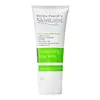What's inside
What's inside
 Key Ingredients
Key Ingredients

No key ingredients
 Benefits
Benefits

 Concerns
Concerns

No concerns
 Ingredients Side-by-side
Ingredients Side-by-side

Phyllostachys Nigra Extract 99%
Skin ConditioningBetaine
HumectantButylene Glycol
HumectantPortulaca Oleracea Extract
Skin ConditioningCananga Odorata Flower Extract
PerfumingCentella Asiatica Leaf Extract
Skin Conditioning1,2-Hexanediol
Skin ConditioningMyrciaria Dubia Fruit Extract
Skin ConditioningTerminalia Ferdinandiana Fruit Extract
AntioxidantRosa Canina Fruit Extract
AstringentMangifera Indica Fruit Extract
Skin ConditioningHippophae Rhamnoides Fruit Extract
Skin ConditioningMalpighia Emarginata Fruit Extract
Skin ConditioningPersea Gratissima Fruit Extract
EmollientEthylhexylglycerin
Skin ConditioningMadecassoside
AntioxidantPolysorbate 20
EmulsifyingCarbomer
Emulsion StabilisingWater
Skin ConditioningGlycerin
HumectantDisodium EDTA
Phenoxyethanol
PreservativeChlorphenesin
AntimicrobialPotassium Hydroxide
BufferingParfum
MaskingPhyllostachys Nigra Extract 99%, Betaine, Butylene Glycol, Portulaca Oleracea Extract, Cananga Odorata Flower Extract, Centella Asiatica Leaf Extract, 1,2-Hexanediol, Myrciaria Dubia Fruit Extract, Terminalia Ferdinandiana Fruit Extract, Rosa Canina Fruit Extract, Mangifera Indica Fruit Extract, Hippophae Rhamnoides Fruit Extract, Malpighia Emarginata Fruit Extract, Persea Gratissima Fruit Extract, Ethylhexylglycerin, Madecassoside, Polysorbate 20, Carbomer, Water, Glycerin, Disodium EDTA, Phenoxyethanol, Chlorphenesin, Potassium Hydroxide, Parfum
 Reviews
Reviews

Ingredients Explained
These ingredients are found in both products.
Ingredients higher up in an ingredient list are typically present in a larger amount.
Betaine is a common humectant (a substance that promotes retention of moisture). It's known to be gentle on the skin and can help balance hydration.
This ingredient is best for improving hydration and soothing irritated skin. Studies also show it helps even out skin tone.
Fun fact: Betaine is naturally created in the skin and body. The kind found within cosmetic products can be either plant-derived or synthetic.
Another name for betaine is trimethylglycine.
Learn more about BetaineCarbomer is a polymer of acrylic acid. Its main role is to create a gel consistency.
A high amount of carbomer can cause pilling or balling up of products. Don't worry, most products contain 1% or less of carbomer.
Chlorphenesin is a synthetic preservative. It helps protect a product against bacteria in order to extend shelf life. In most cases, Chlorphenesin is paired with other preservatives such as phenoxyethanol and caprylyl glycol.
Chlorphenesin is a biocide. This means it is able to help fight the microorganisms on our skin. It is also able to fight odor-releasing bacteria.
Chlorphenesin is soluble in both water and glycerin.
Studies show Chlorphenesin is easily absorbed by our skin. You should speak with a skincare professional if you have concerns about using Chlorphenesin.
Learn more about ChlorphenesinGlycerin is already naturally found in your skin. It helps moisturize and protect your skin.
A study from 2016 found glycerin to be more effective as a humectant than AHAs and hyaluronic acid.
As a humectant, it helps the skin stay hydrated by pulling moisture to your skin. The low molecular weight of glycerin allows it to pull moisture into the deeper layers of your skin.
Hydrated skin improves your skin barrier; Your skin barrier helps protect against irritants and bacteria.
Glycerin has also been found to have antimicrobial and antiviral properties. Due to these properties, glycerin is often used in wound and burn treatments.
In cosmetics, glycerin is usually derived from plants such as soybean or palm. However, it can also be sourced from animals, such as tallow or animal fat.
This ingredient is organic, colorless, odorless, and non-toxic.
Glycerin is the name for this ingredient in American English. British English uses Glycerol/Glycerine.
Learn more about GlycerinPhenoxyethanol is a preservative that has germicide, antimicrobial, and aromatic properties. Studies show that phenoxyethanol can prevent microbial growth. By itself, it has a scent that is similar to that of a rose.
It's often used in formulations along with Caprylyl Glycol to preserve the shelf life of products.
Water. It's the most common cosmetic ingredient of all. You'll usually see it at the top of ingredient lists, meaning that it makes up the largest part of the product.
So why is it so popular? Water most often acts as a solvent - this means that it helps dissolve other ingredients into the formulation.
You'll also recognize water as that liquid we all need to stay alive. If you see this, drink a glass of water. Stay hydrated!
Learn more about Water